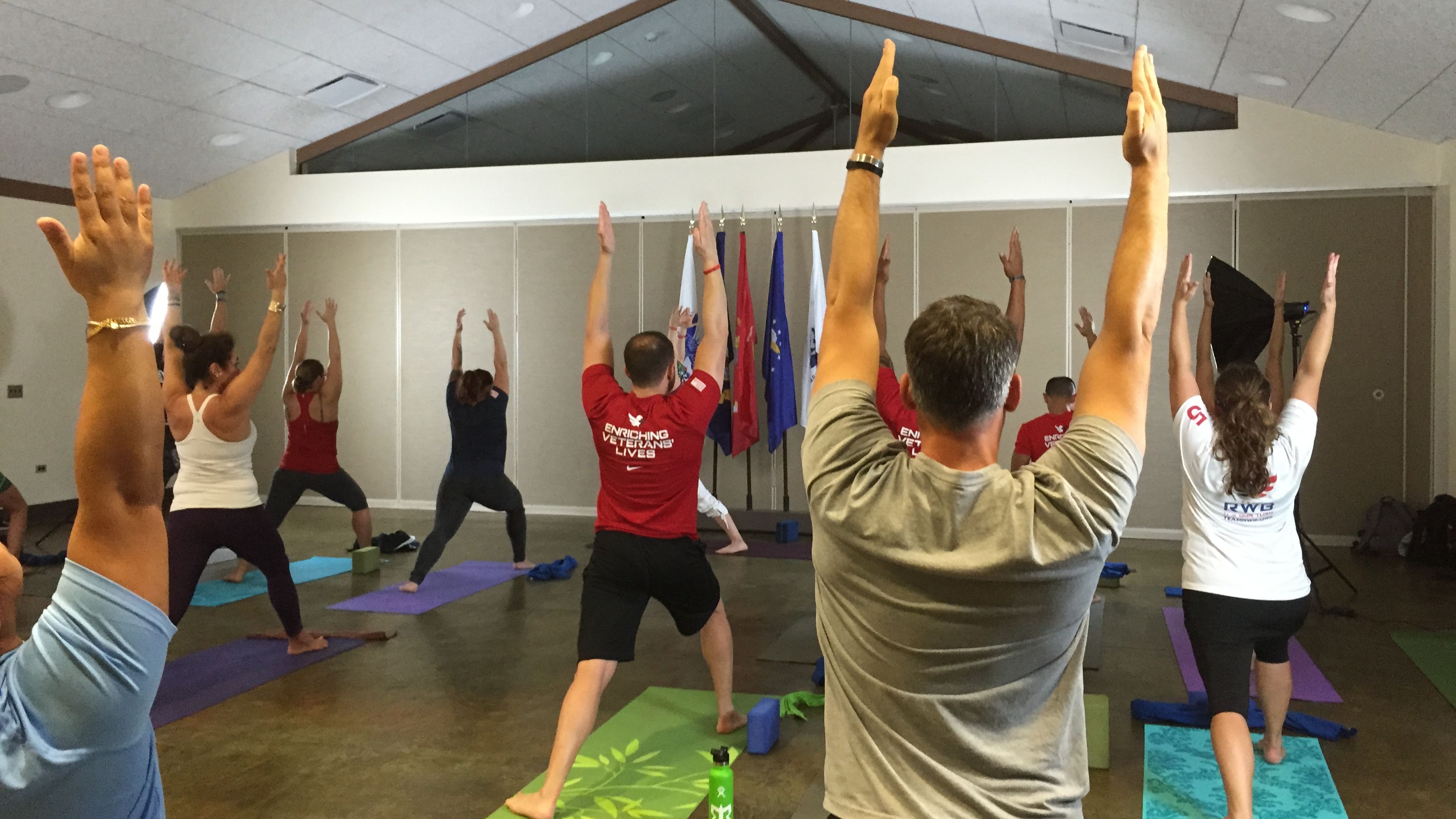Helpful Tips For Attending Your First Yoga Class

If you’ve followed Warriors at Ease, you know we believe in the power of yoga and meditation to support the health and healing of service members, veterans, and their families. (Just look at our mission statement!) We firmly believe that yoga is for everyone, truly. But just like any activity or profession, there are some unspoken rules or guidelines that will make practicing yoga in a group setting a little easier.
Here are a few things you should know before you attend your first yoga class that will make settling into the practice easier on the body and mind.
Do a Little Research
If you’re totally new to yoga and meditation — like you have no idea what a “down dog” is — then do a little research before heading to class. We like this series of images from Yoga Journal — it shows the posture and the name. Looking up some of the basic yoga poses you’re likely to encounter in every class — like Downward Facing Dog or Child’s Pose — will make doing the poses a little easier on you since you won’t constantly be craning your neck to see what the instructor is talking about.
Start with a Beginner’s Class
You may be a fantastic athlete, but a beginner’s class is the right place to start when you’re, well, a beginner. Look, everyone starts out as a beginner in everything they do. Yoga is no different. Don’t underestimate the challenge you may experience in one of these classes. You’ll be asked to do postures and movements you may not be familiar with — which may take a little getting used to. You can graduate to a more advanced class when you feel ready.
Alert Your Teacher to Your Injuries
Some teachers will begin the class by asking about injuries and some won’t. If you’ve got an injury — like a bad back, hip replacement, pulled muscle, etc — make sure to let your teacher know before class. Get there a few minutes early and let him/her know the situation. The instructor will then know what poses to steer clear of for the class and/or be able to offer you some guidance on what poses or avoid or modify during the practice. It’s important to respect your limits during yoga and part of that includes not worsening your injuries.
Make Your Practice Tech-Free
Two of the eight limbs of yoga — Pratyahara and Dharana — are meant to help you draw your attention away from the external world and practice your concentration. If your phone is next to your mat or your smartwatch keeps going off it’s not likely you’ll be very present and focused on what you’re doing in class. To get the most out of your practice, try to make it as distraction-free as possible. Leave you phone outside of the classroom — along with any other tech that may create a distraction. Being fully present in each moment during the class will allow you to reap the most benefits from your practice.
Avoid Eating Heavy Before Class
It’s pretty straightforward: Some yoga classes include inversions, heavy breathing and other postures that can increase your heart rate and make you nauseous. If you’re feeling hungry before your class, eat a light snack and have some water. Once the practice is over, feel free to fill up.
Be Open to Using Props
Many people view using props as a sign that they’re not good at yoga. This simply isn’t true! Props are support tools everyone can and should use during a yoga class to support a safe expression of any yoga pose. If your teacher encourages you to use props for a specific pose, humor them by giving them a whirl. If you’re able to move into a different expression of the pose without the props, great! And if not, lean into the items that are allowing you to do the pose in the first place. They’re great tools that help prevent injuries and complete poses that may otherwise be inaccessible.
Wear and Use What Works Best for You
It can be intimidating to walk into a class and see everyone wearing a similar outfit. But “yoga pants” actually aren’t required to do yoga. Wear what you feel the most comfortable in; something that has some stretch (you will be moving, after all) and that will allow you to maintain modesty (you don’t want to show off too much while you’re in a standing forward fold). It’s okay not to have a $100 yoga mat; the $9 mat you can get locally will do the same job. A normal beach towel works just as well as a special yoga mat-sized towel, and a plastic water bottle is perfectly acceptable as a water container. What’s important is your presence!
Be Open to Your Experience
Some days you’ll feel great on the mat and other days you won’t. On Monday you may be able to hold tree pose for three minutes and on Thursday you won’t be able to get your foot off the ground. Everyone in class may be able to do side plank and you may need to modify it due to a shoulder injury. All of that is okay! Feeling uncomfortable and a little unbalanced during class is part of the process. But pushing yourself to “match” the instructor or someone else when your body is telling you otherwise is not. Listen to your body. If you need to modify a pose — do it! If you need to take a break, do it! Your practice is about you and where you are that day. Lean into it and welcome it, just as it is.
Stay Up To Date!
Get training info, classes, research, and opportunities delivered directly to your inbox
We hate SPAM. We will never sell your information, for any reason.


